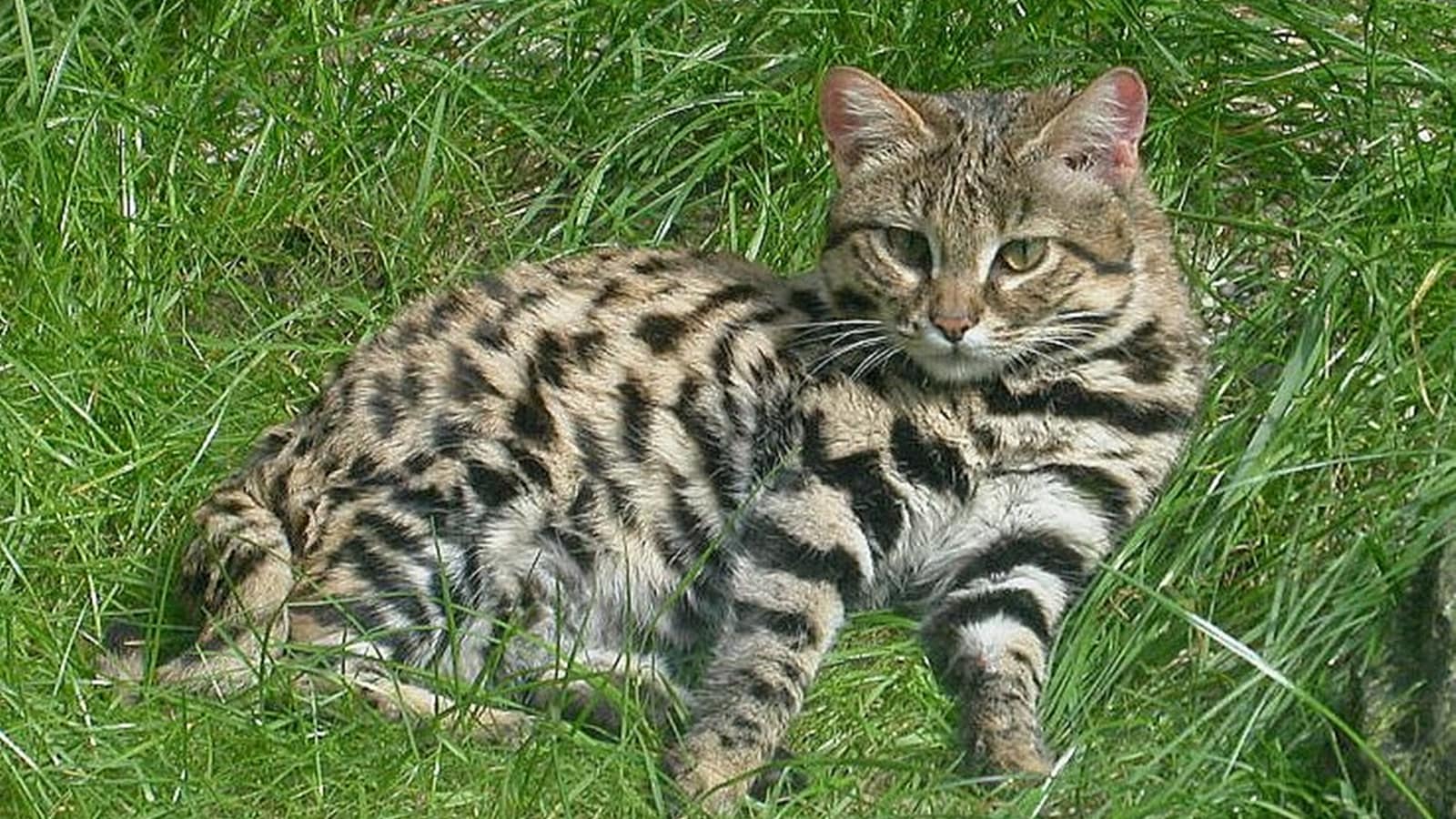📣 For more lifestyle news, click here to join our WhatsApp Channel and also follow us on Instagram
This cute cat is actually a hunting machine; know all about it
Black-footed cats are nocturnal, secretive, and live in pretty remote places. Unlike lions that roam open plains by day, these little predators are more like ghost cats—hard to see, even harder to study
 Discover the African black-footed cat (Felis nigripes) (Source: Wikimedia Commons)
Discover the African black-footed cat (Felis nigripes) (Source: Wikimedia Commons)You’ve probably never heard of the African black-footed cat, and honestly, that’s a bit of a shame. This tiny, wild feline might not be as famous as lions or cheetahs, but what it lacks in size and celebrity, it more than makes up for in sheer hunting power. In fact, it’s often dubbed the most efficient predator in the feline world.
Don’t let the cute, spotted fur fool you. The black-footed cat (Felis nigripes) is the smallest wild cat species in Africa, standing just around 8 inches tall and weighing about 2 to 5 pounds. That’s roughly the size of a large guinea pig. But looks can be deceiving.
This cat gets its name from the black fur on the undersides of its feet, which actually helps it move quietly across sandy, arid terrain. Its coat is beautifully patterned with bold dark spots and stripes that help it blend into the dry savannas and deserts it calls home.
Black-footed cats live mostly in southern Africa. They prefer dry, open environments like the Kalahari Desert and the Karoo, where they rest in abandoned burrows during the day and do their hunting at night.
They’re solitary and shy, so even researchers have a hard time spotting them in the wild. Most of what we know comes from years of patient tracking and camera trap footage.
 Black-footed cats live mostly in southern Africa (Source: Wikimedia Commons)
Black-footed cats live mostly in southern Africa (Source: Wikimedia Commons)
Now here’s the real shocker: This tiny cat is an absolute hunting machine. Some studies have shown it has a hunting success rate of over 60%. That’s higher than lions, tigers, or any of the big cats.
On average, a black-footed cat will take down 10 to 14 prey animals a night, feeding on rodents, birds, insects, and even hares or reptiles when it can catch them. That kind of performance means it may eat up to 3,000 animals per year. No wonder it’s often called the “anthill tiger.”
What’s even more impressive? It uses a variety of hunting strategies, sometimes stalking silently, other times running down prey in short bursts, or even just waiting motionless for the perfect ambush.
Family life and survival
Black-footed cats are seasonal breeders, and females typically give birth once or twice a year, usually between October and March. Litters are small, one to two kittens on average, and the young are independent within a few months.
In the wild, these cats can live up to 13 years, though in captivity they’ve reached around 15 with proper care.
Despite their amazing abilities, black-footed cats are in trouble. The IUCN currently lists them as Vulnerable, with fewer than 10,000 adults believed to be left in the wild.
Their biggest threats are habitat loss, poisoned prey, vehicle collisions, and attacks from other predators. And since they rely heavily on burrows dug by other animals, like springhares or aardvarks, any disruption to their ecosystem can spell disaster.
Thankfully, organizations like the Black-footed Cat Working Group are actively studying and protecting these elusive cats through field research, education, and conservation programs.
📣 For more lifestyle news, click here to join our WhatsApp Channel and also follow us on Instagram
- 01
- 02
- 03
- 04
- 05



























